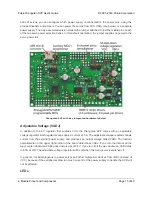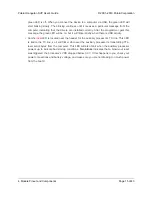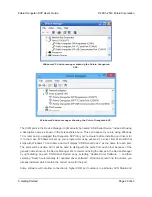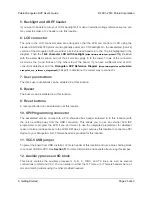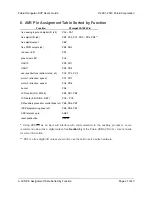
bank of servos, you can configure which power supply is connected to the power pins, using the
provided headers and jumpers. You can power the servos from VCC, VADJ (see below), or a separate
power supply. The fully assembled version ships with a jumper attached to just the middle pin of each
of the two servo power selection banks. In this default orientation, the jumper supplies no power to the
servo power rail.
Orangutan SVP with key integrated hardware labeled.
Adjustable Voltage (VADJ)
In addition to the 5 V regulator that supplies VCC, the Orangutan SVP comes with an adjustable
voltage regulator. Both regulators can supply a current of 3 A. The adjustable voltage regulator draws
current from the external power supply, and produces an output voltage called VADJ. The trimmer
potentiometer in the upper right corner of the board determines VADJ. If you turn the trimpot all the
way counter-clockwise, VADJ goes down to about 2.5 V. If you turn it all the way clockwise, VADJ rises
to 85% of VIN. The adjustable voltage regulator will be off when the main power is switched off.
In general, it is advantageous to power servos and other high-power devices from VADJ (instead of
VCC), because if the peripherals draw too much current for the power supply to handle the AVR will
not be affected.
LEDs
Pololu Orangutan SVP User’s Guide
© 2001–2019 Pololu Corporation
4. Module Pinout and Components
Page 13 of 43













